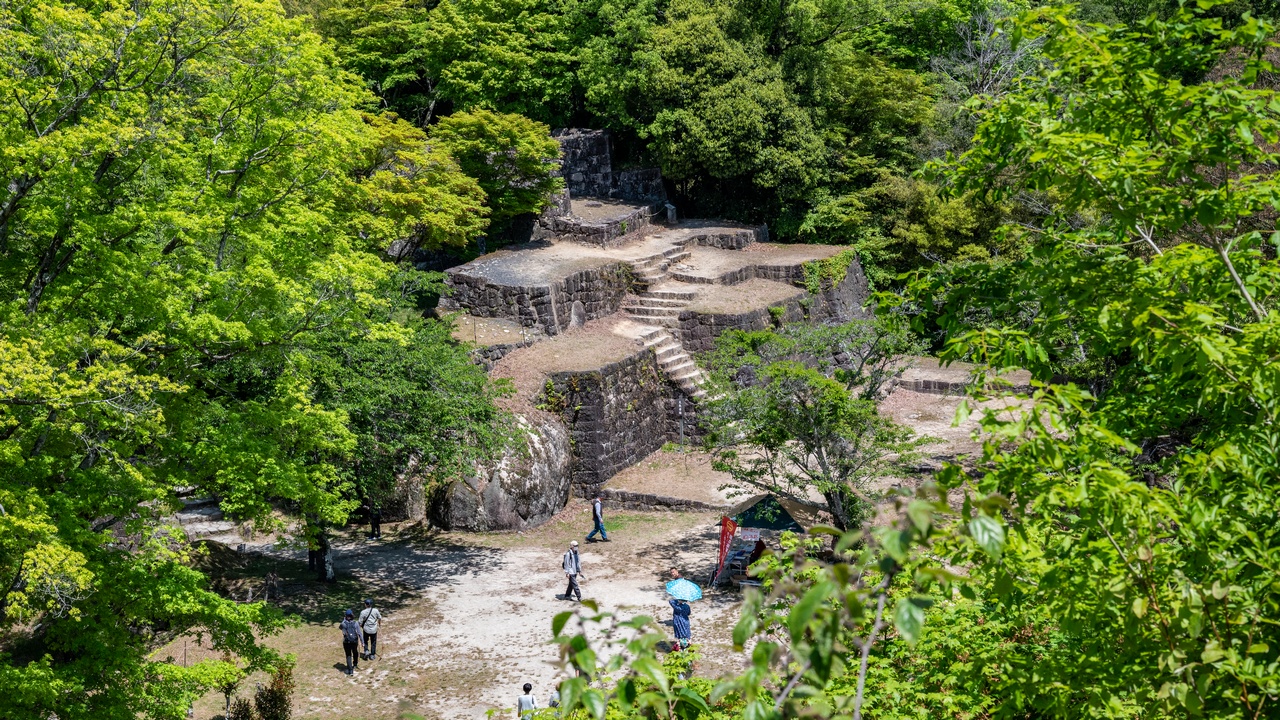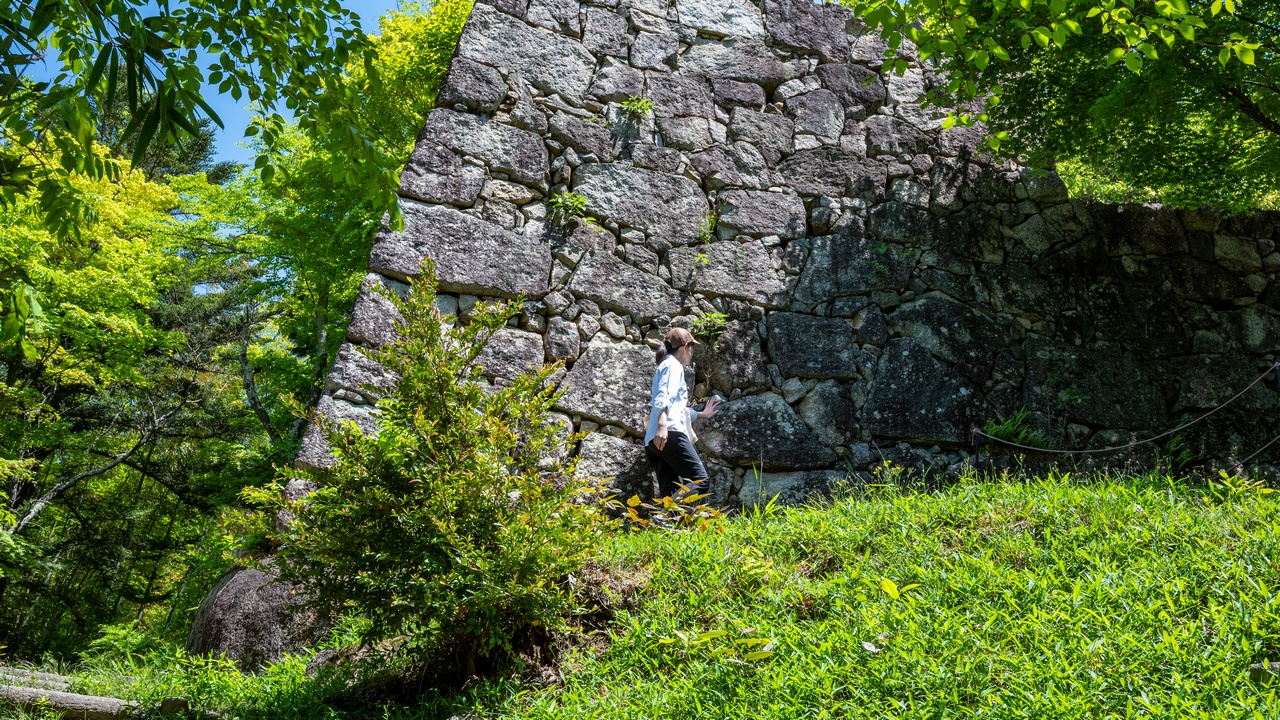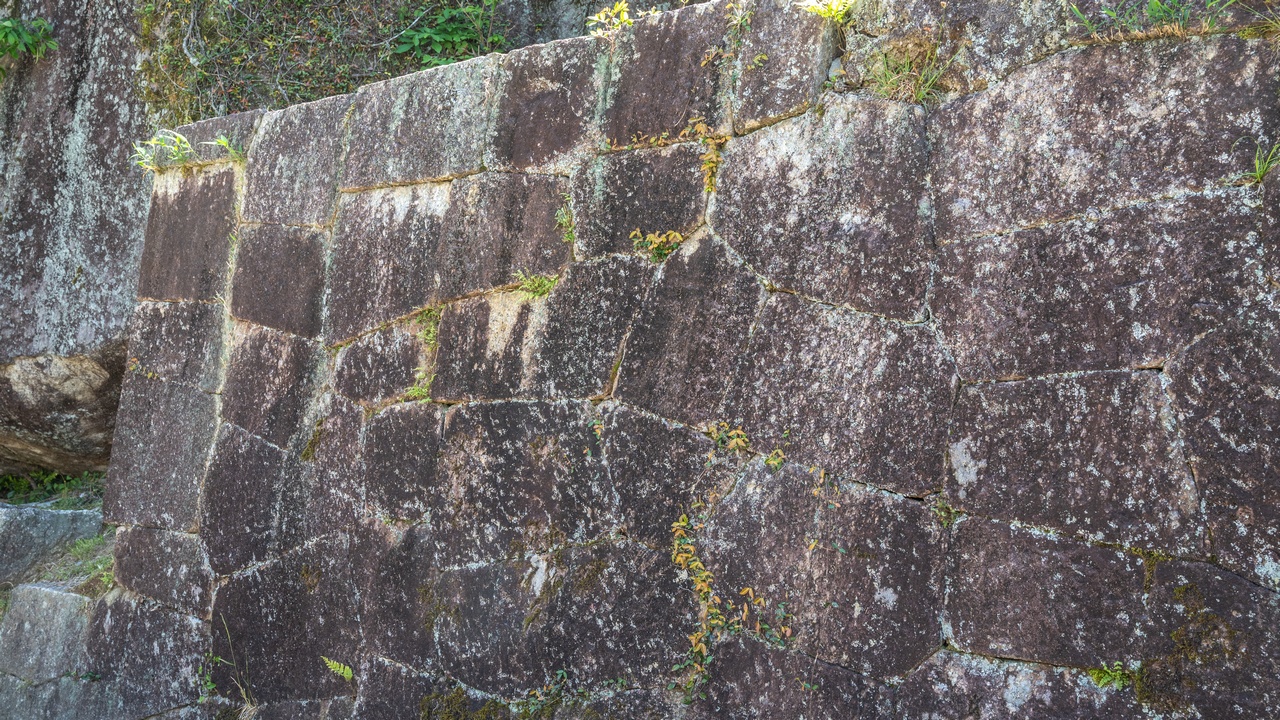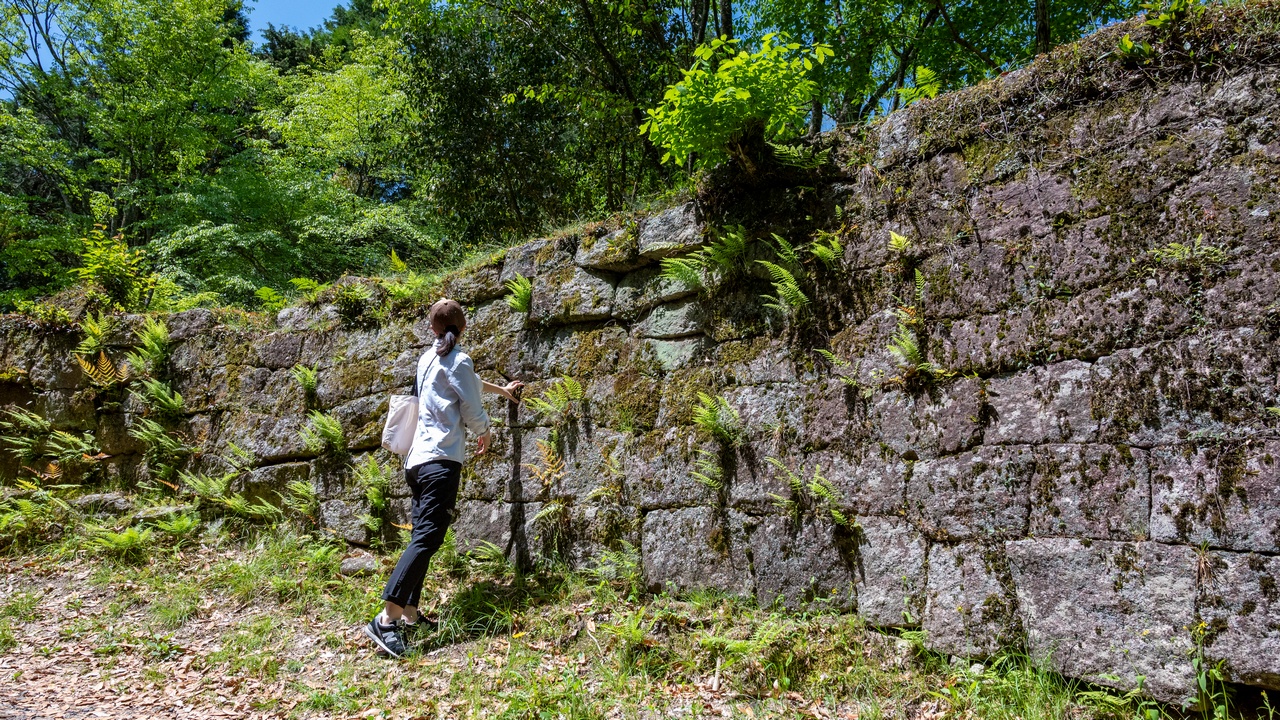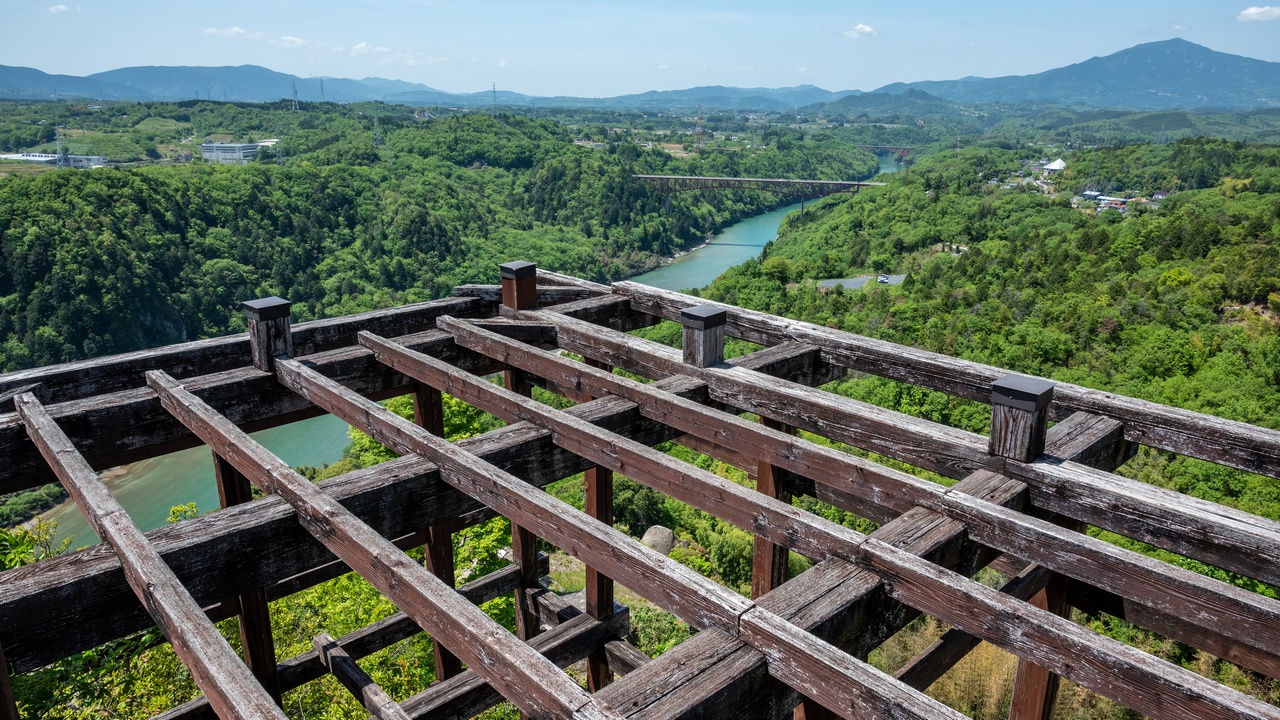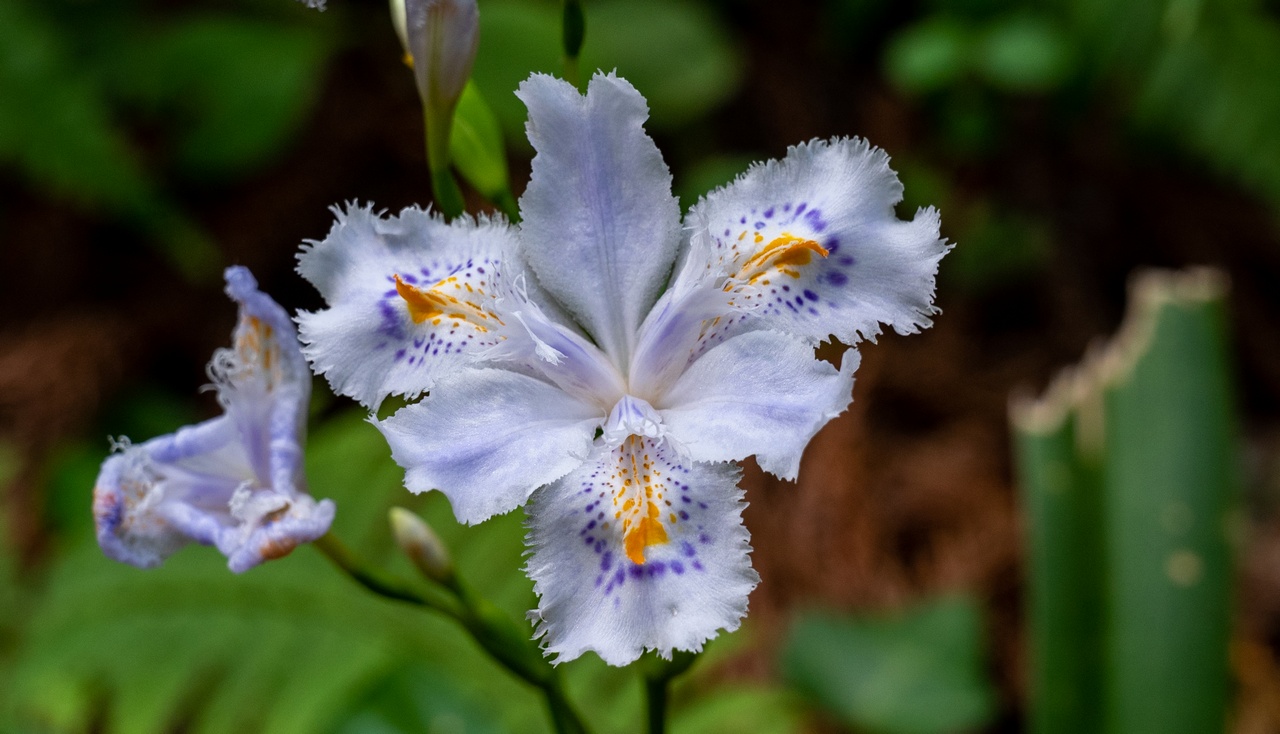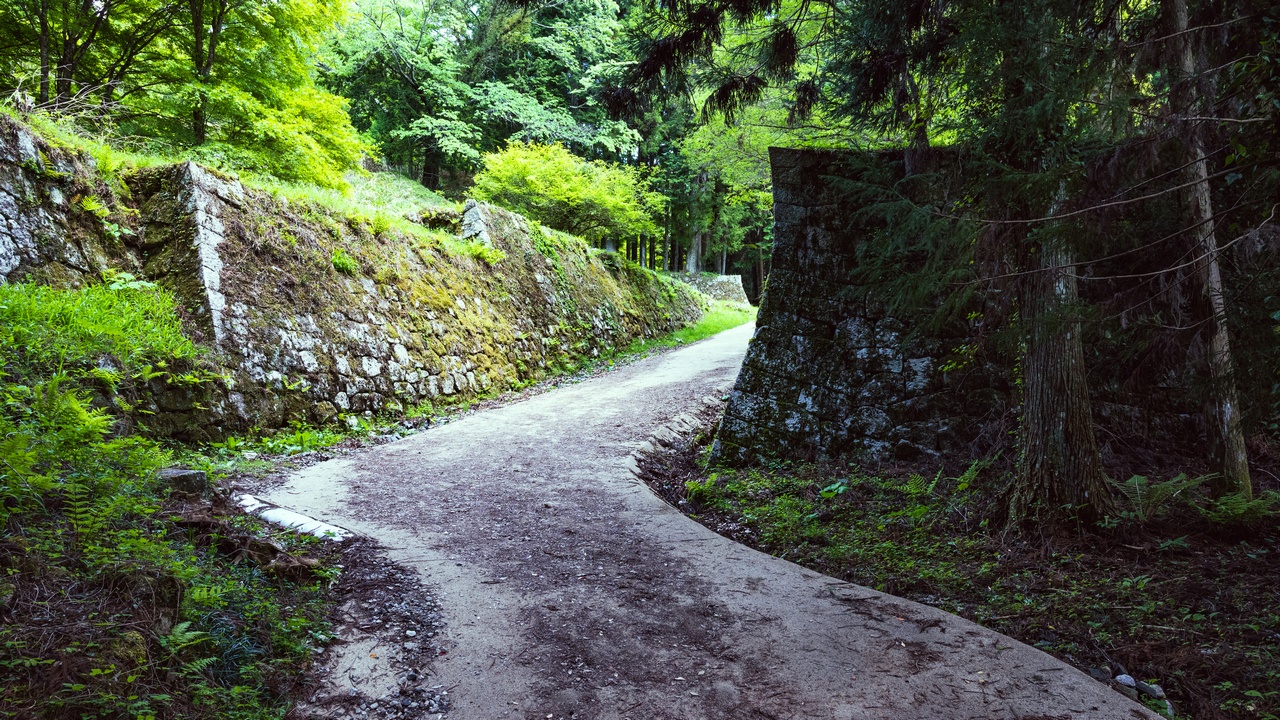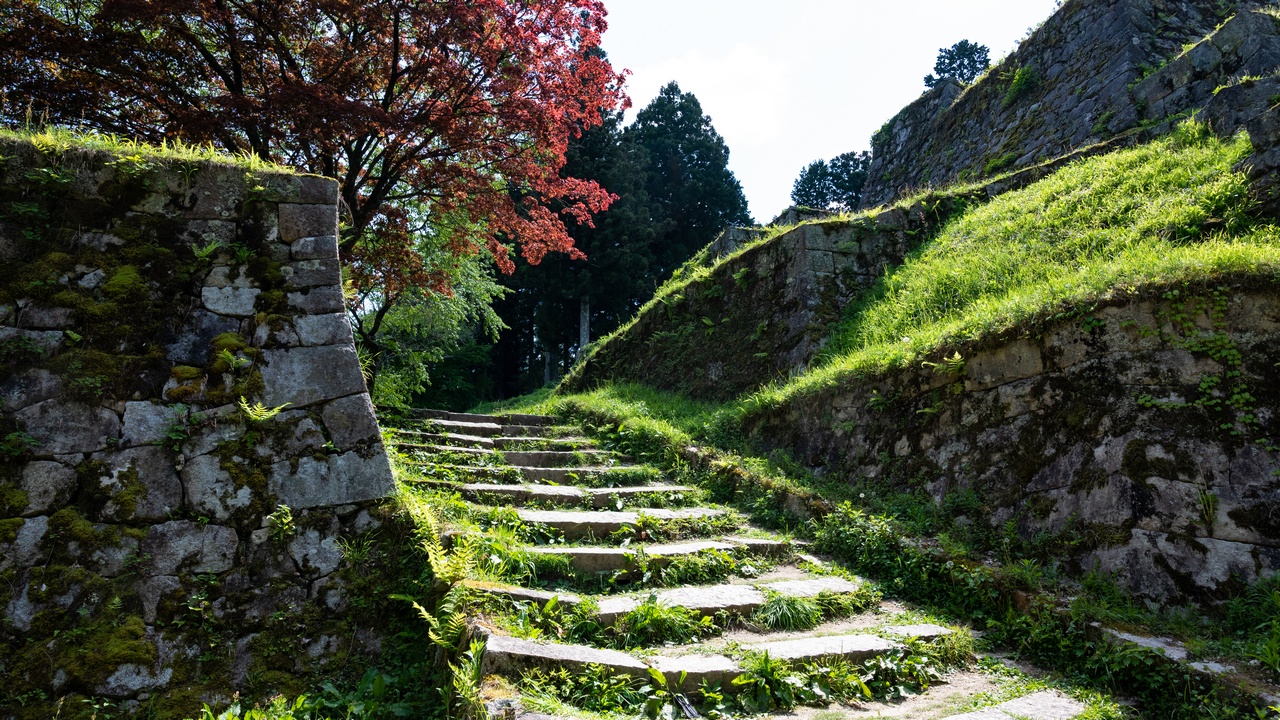Prior to the year 1600, Japan was in a period of civil war for more than 150 years. Military commanders, so-called Sengoku-Daimyo, in these warring states, had to construct a strong fortress, or mountain castle, to maintain and protect their own territories.
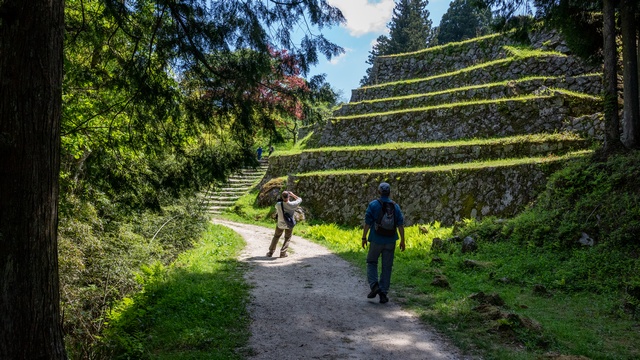
The top part of Iwamura Castle Ruin in Ena ciry. In some cases, these mountain castles have been preserved and used during the Edo period until its end, or even the beginning of the Meiji era (1868 ~). In Gifu Prefecture, we find two wonderfully preserved mountain castle ruins, Naegi Castle and Iwamura Castle.
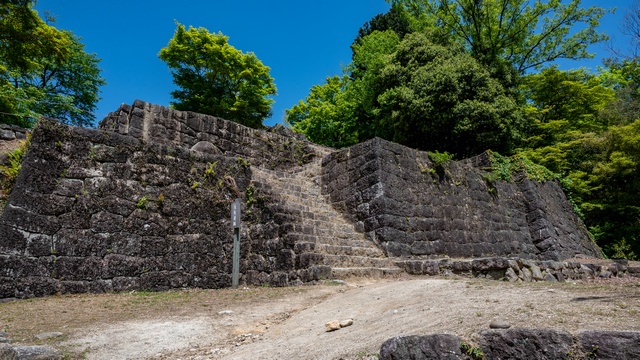
Unfortunately, we can no longer see any wooden buildings, but the tremendous work of the stone walls allows our imagination to be unleashed. The picture above shows the portion of Naegi Castle Ruin.

Splendid view from the summit of the ruins of Naegi Castle in the city of Nakatsugawa. In this perspective, we recognise three post towns along the Nakasendo Trail, Nakatsugawa, Ochiai and Magome.
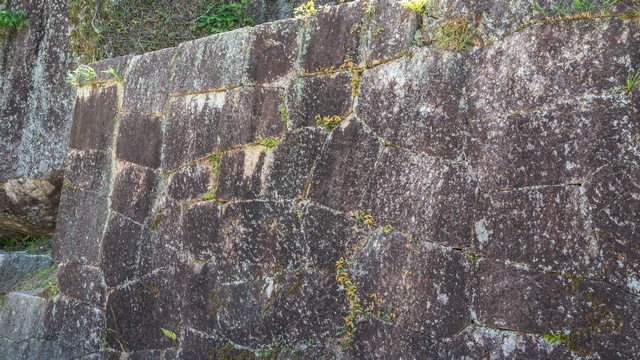
Kirikomihagi (切込接ぎ) Technique – This is the final and most sophisticated technique developed after the 17th century. The surface is flat and smooth. The seams fit perfectly, and there are no gaps.
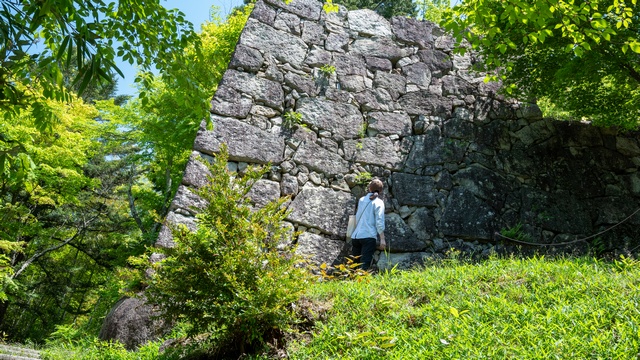
Uchikomihagi (打込接ぎ) Technique – This second stage technique was developed before 1600. It uses large-sized stones and fills the gaps with smaller stones for additional strength.
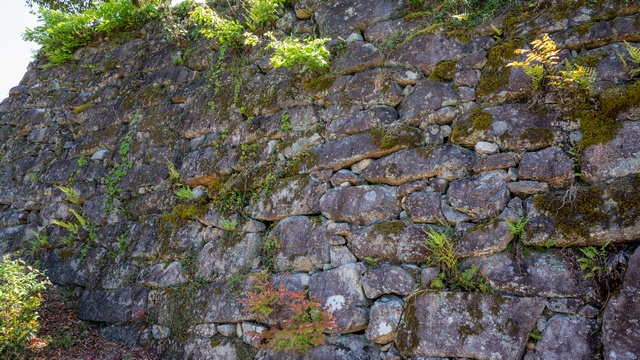
Nozurazumi (野面積み) Technique – It’s the most primitive stage technique for building stone walls. But, surprisingly, some of the stone walls built more than 500 years before retaining their shape and strength to this day.
